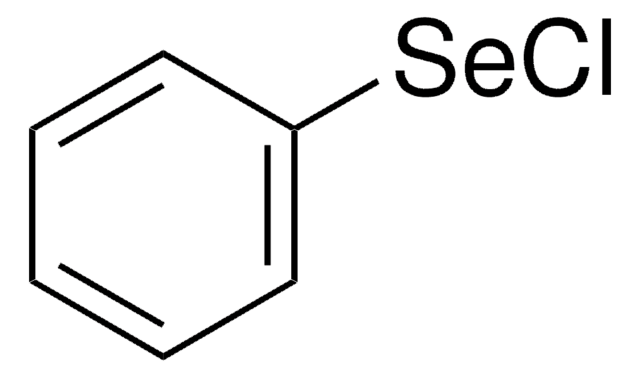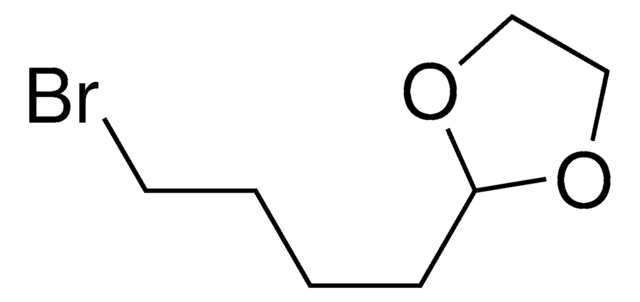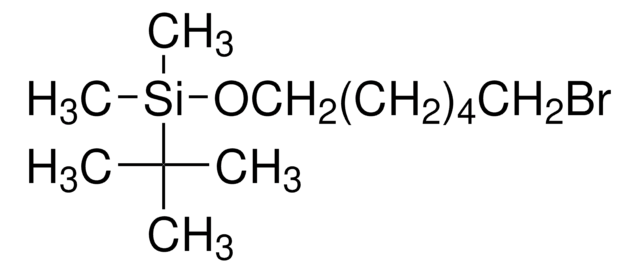528692
2-(6-Bromohexyloxy)tetrahydro-2H-pyran
97%
Synonym(s):
1-Bromo-6-tetrahydropyranyloxyhexane, 6-Tetrahydropyraryloxy-1-bromohexane
Sign Into View Organizational & Contract Pricing
All Photos(1)
About This Item
Empirical Formula (Hill Notation):
C11H21BrO2
CAS Number:
Molecular Weight:
265.19
EC Number:
MDL number:
UNSPSC Code:
12352100
PubChem Substance ID:
NACRES:
NA.22
Recommended Products
Quality Level
Assay
97%
contains
1% potassium carbonate as stabilizer
refractive index
n20/D 1.478 (lit.)
bp
125 °C/0.1 mmHg (lit.)
density
1.209 g/mL at 25 °C (lit.)
storage temp.
2-8°C
SMILES string
BrCCCCCCOC1CCCCO1
InChI
1S/C11H21BrO2/c12-8-4-1-2-5-9-13-11-7-3-6-10-14-11/h11H,1-10H2
InChI key
CWSSIUJITPYGLK-UHFFFAOYSA-N
Looking for similar products? Visit Product Comparison Guide
General description
2-(6-Bromohexyloxy)tetrahydro-2H-pyran can be synthesized by reacting 6-bromohexanol and pyridinium p-toluenesulfonate in anhydrous dichloromethane.
Application
2-(6-Bromohexyloxy)tetrahydro-2H-pyran may be used as a reactant in the synthesis of diethyl 6-(tetrahydropyran-2-yloxy)hexylphosphonate and 13-(tetrahydo-2H-pyran-2-yloxy)-6-tridecyn-1-ol.
Storage Class Code
10 - Combustible liquids
WGK
WGK 3
Flash Point(F)
230.0 °F - closed cup
Flash Point(C)
110 °C - closed cup
Personal Protective Equipment
dust mask type N95 (US), Eyeshields, Gloves
Choose from one of the most recent versions:
Already Own This Product?
Find documentation for the products that you have recently purchased in the Document Library.
Ashot Khrimian et al.
Journal of agricultural and food chemistry, 56(7), 2452-2456 (2008-03-13)
The browntail moth, Euproctis chrysorrhea (L.), is native to Eurasia, where periodic outbreaks result in defoliation of forest, shade, and ornamental trees. In addition to the damage caused by defoliation, human contact with larval urticating hairs often results in severe
Synthesis and polymerization kinetics of acrylamide phosphonic acids and esters as new dentine adhesives.
Besse V, et al.
Journal of Polymer Science Part A: Polymer Chemistry, 51(1), 149-157 (2013)
Our team of scientists has experience in all areas of research including Life Science, Material Science, Chemical Synthesis, Chromatography, Analytical and many others.
Contact Technical Service








